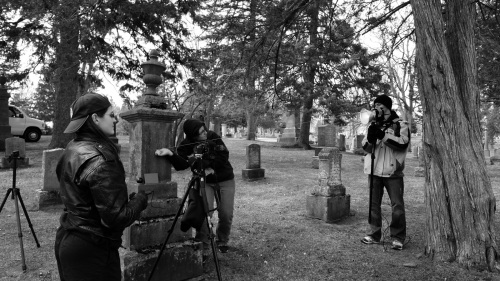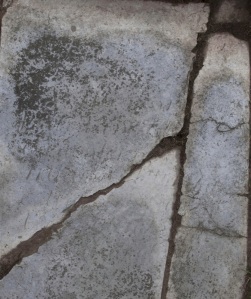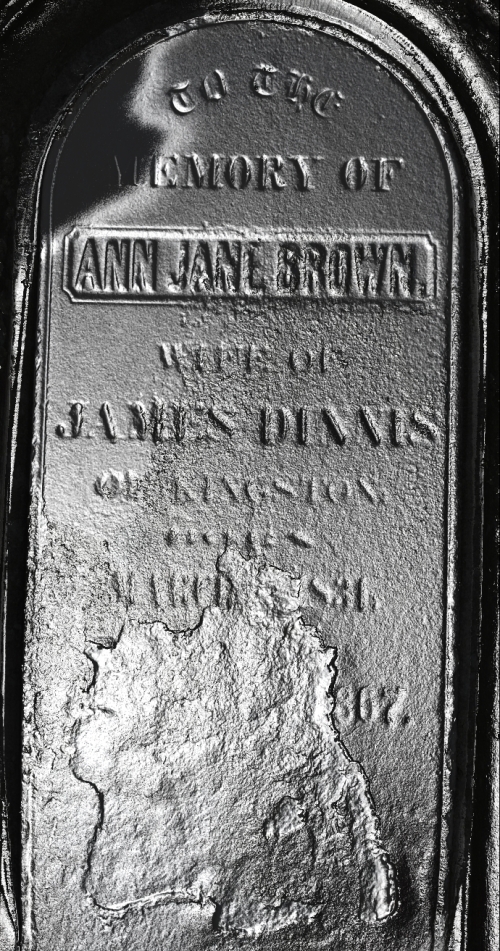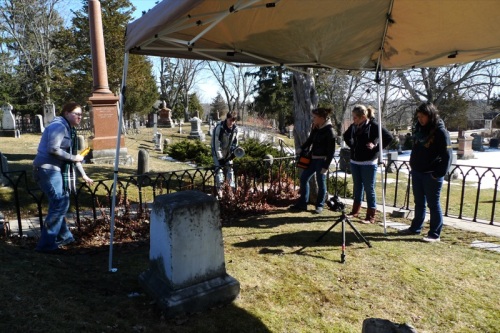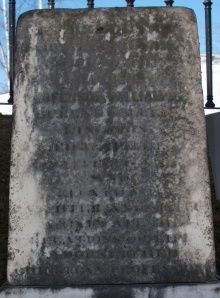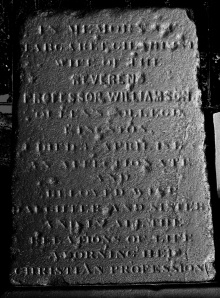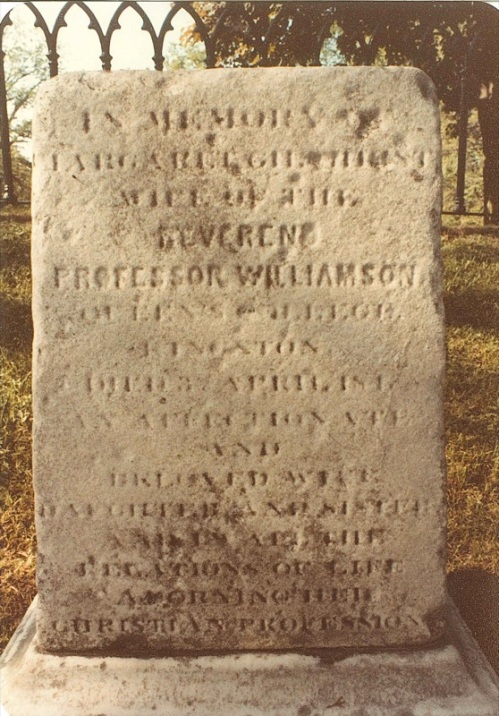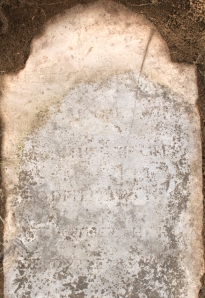It was a brisk Saturday afternoon at the end of March when we organized the first official day of the workshop in the cemetery. Many were familiar faces to us from the pilot project, but others were new to RTI. The overcast conditions favoured good RTI captures as the ambient light was relatively low and even.
Notice hats and gloves were necessary for the day’s work!
Some low shots using the monopod. Notice Fernando recording the process (see the end of the post of the fruits of his labour).
If you look carefully at these shots you can see a metal rod protruding from the flash along the line of the string and the cone of light (a Canadian invention, we might add)…more on the “rod technique” in a later post.
Fernando again hard at work recording the process in HD video. While it was a good day for RTI, the light conditions were frustrating for such a seasoned filmmaker.
In order to get as many light positions as possible, we have been making regular use of a step-ladder. Caution is needed, however, on the rolling terrain. As we remind the students, many of the dips in the topography represent long-collapsed coffins. It’s important to remember just where we are…
This is wonderfully clear image the rod extending from the flash to the centre of the object.
Here’s a shot of our final post-processing in the Classics Lounge in Watson Hall. We’re using a brand-new Dell M6500 Mobile Precision Workstation with a 17″ monitor and 8gb of RAM. With this, the process of fitting and manipulating Polynomial Texture Maps is a breeze. With the addition of our Intel Solid State Disk we’ve really broken the sound barrier on the assembly of large RTIs (>100mb). Notice also Sarah and Craig sporting the Queen’s colours, just in case you didn’t know this was a Queen’s University Project!
Here’s great video we put together using Fernando’s footage. Many thanks to Sara Gabova for providing the pleasant voice-over.
Thanks Fernando!

